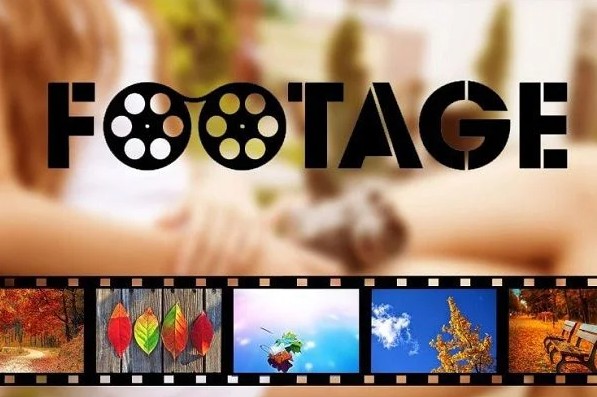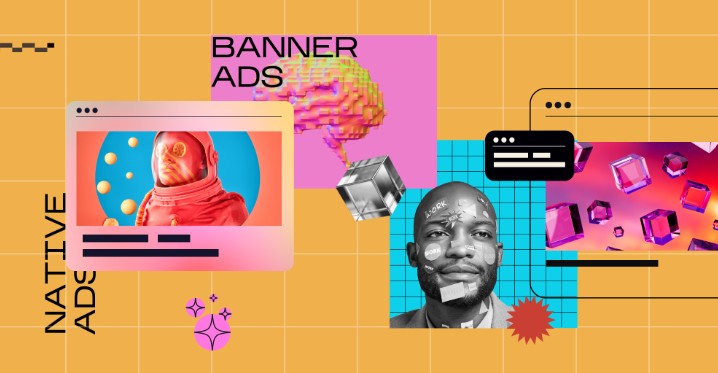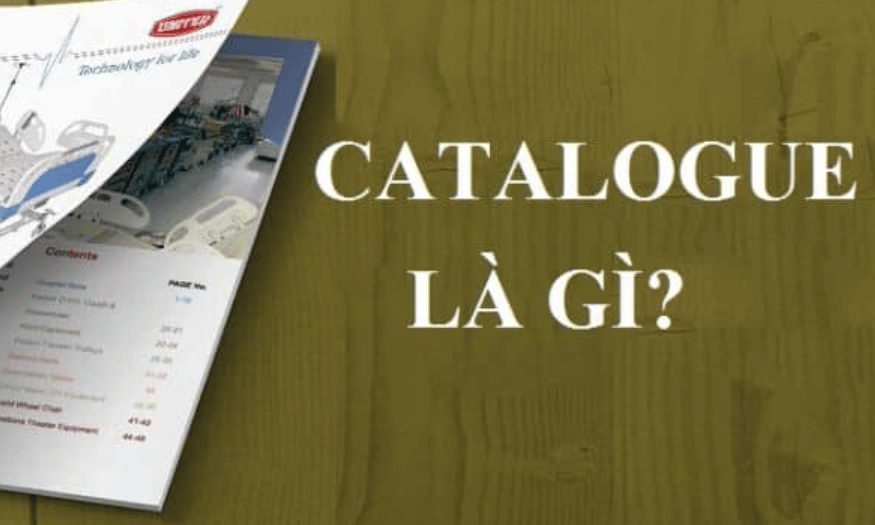Best Selling Products
Tips for Making Super Impressive Footage for Advertising Campaigns
Nội dung
- 1. What is Footage?
- 2. Popular Footage Categories
- 2.1. Raw footage (Live footage)
- 2.2. Stock footage (Pre-purchased clips)
- 2.3. Drone & aerial footage
- 2.4. Animation footage & motion graphics
- 2.5. Special footage: slow-motion, time-lapse, hyperlapse
- 3. What Footage formats are in the video?
- 3.1. A-Roll
- 3.2. B-Roll
- 3.3. RAW footage
- 4. Benefits of video footage
- 5. How to create quality Footage
Discover simple yet powerful ways to create footage that turns every frame into a highlight that will make your promotional video stick in the minds of your audience.

Today's advertising videos are not just a series of moving images, but an emotional journey, a vivid story that connects the brand with the audience. To create that experience, in addition to a tight script and content, Footage , or original film clips, plays a key role. Let's explore with SaDesign what footage really is and how you can create attractive footage, contributing to elevating your advertising video campaign.
1. What is Footage?
In video production, footage is raw, unedited footage. Typically, footage must go through post-production editing before it can be turned into a finished film or video. Depending on the purpose and content of the video, different types of footage are needed. An edited video can also be used as footage in another video.
.png)
2. Popular Footage Categories
Before starting production, you need to understand the types of footage in circulation, thereby choosing the right source of "raw material" for the promotional video.
2.1. Raw footage (Live footage)
Raw footage is the original footage that you shoot yourself with a camcorder, mirrorless/DSLR camera, smartphone... Advantages: exclusive, flexible, 100% control over frame and sound. Disadvantages: time-consuming to shoot, requires a professional crew, suitable equipment.
2.2. Stock footage (Pre-purchased clips)
Stock footage is clips that are pre-recorded and sold copyrighted on platforms such as Shutterstock, Adobe Stock, Pexels Video, Videvo... Advantages: cost-saving - time, diverse topics. Disadvantages: easy to duplicate with competitors, limited in-depth editing.
2.3. Drone & aerial footage
The footage is recorded from above by flycam/drone. Provides a wide, impressive perspective, suitable for landscape, architectural, and outdoor event scenes. However, it requires drone control skills, compliance with flight regulations, and higher initial investment costs.
.png)
2.4. Animation footage & motion graphics
Not real film, but motion graphics created by After Effects, Blender, Cinema 4D... Suitable for explainer videos, animated infographics, effects that are difficult to film in real life (particles, 3D models). Advantages: unlimited creativity, easy to integrate with real footage. Disadvantages: requires graphic skills, long rendering time.
2.5. Special footage: slow-motion, time-lapse, hyperlapse
Slow-motion: Shoot at high frame rates (60–240 fps), slow playback, emphasize detailed moments.
Time-lapse: Record frames with a delay between each shot (eg 1 frame/second), combine and play back quickly, suitable for filming clouds, streets, construction processes.
Hyperlapse: Combines camera movement and time-lapse to create a fast-moving footage effect.
Each type of footage has its own role, you need to flexibly combine them to create a harmonious, colorful and emotional advertising video.
3. What Footage formats are in the video?
Video footage comes in three main formats. They include: A-Roll, B-Roll, RAW footage.
.png)
3.1. A-Roll
A-Roll is the audio and key footage that creates the flow of the video. This format is often indispensable footage in documentaries, news, reality shows, talk shows, etc.
However, if the finished video only consists of A-Roll footage, it will be boring and make the audience not want to continue watching. Therefore, to create attractive videos, editors will edit and add B-Roll video footage. From there, they will be more attractive and smoother.
3.2. B-Roll
B-Roll is a video transition. They are additional scenes that provide visual perspective to the video. They serve to illustrate the A-Roll. At the same time, B-Roll clips help make the transition scenes more interesting and lively.
B-Roll footage is usually high quality local footage with no specific storyline. B-Roll footage is very diverse. It can be sky shots, fly-by-wire, fly-by with effects, etc.
3.3. RAW footage
RAW footage is raw video from the camera sensor. This is footage that is shot in high detail, well-lit, and retains its detail. Editors and post-production staff will edit and correct this footage very quickly.
RAW footage is now considered the key to creating color for film footage. For brands, these videos are very important. They have a great effect in impressing the "audience".
.png)
4. Benefits of video footage
Once you have a solid grasp of the concept, let's take a look at the specific benefits that video footage brings to your advertising campaign:
Save time and money
No matter what field you operate and do business in, from: youtuber, streamer, business, to big brands,... creating promotional videos is always an indispensable part of marketing and digital marketing campaigns.
Therefore, the process of creating previous footage is always valuable, you can take advantage of it for the next time. You can cut, combine, and add them to advertising publications to create more attraction and uniqueness. From there, with these "resources" you will save more costs and efforts.
High flexibility in creation
A diverse archive of footage (camera angles, movements, slow-motion and time-lapse effects) allows you to easily combine, incorporate motion graphics or modify the script without having to shoot more. You can reuse the same clips in different projects, simply adjusting the color grading or audio accordingly.
.png)
Brand consistency
When you produce your own or manage your own stock footage, you control the overall visual style—from color tone to lighting to animation. This gives your promotional videos their own “signature,” making them memorable and easily recognizable to your brand.
Increase professional quality
Properly shot footage (high resolution, stable frame rate, well-controlled lighting) provides a smooth, crisp viewing experience. Audiences will perceive your campaign as more professional and invested—a key factor in enhancing brand credibility.
Easily expand & update content
When you have raw footage available, you can quickly create new versions: trim clips for Facebook Ads, adjust square or vertical frames for Instagram Reels, TikTok... without having to start over. This helps flexibly meet the requirements of many platforms and market trends.
5. How to create quality Footage
.png)
Quay RAW footage
In production and editing, codecs are no longer strange to everyone. This is the way for the camera to compress files before exporting video to the computer. They help make compressed files smaller, while allowing the device's memory to store more data.
Although this method is commonly used, however, the quality of videos and photos will be reduced. Therefore, before using this method, you should consider setting the RAW recording mode as the most optimal.
Don't take Storyboard lightly
Storyboard is often a very important step before making a video. It helps to realize the video idea through sketches on paper. Therefore, before shooting, to avoid confusion of ideas, you should draw a storyboard to visualize the details more clearly.
Use shallow depth of field
Depth of field is the areas of focus in the frame of your videos. Therefore, to get footage with the desired depth, you should prioritize cameras with detachable lenses.
Shoot at 24fps
Nowadays, most cameras are equipped with both 30fps and 24fps modes. However, to get the most cinematic footage, you should use 24fps. Because this shooting level is considered the most realistic to the viewer's perspective.
.png)
Absolutely no zoom
Zoom is a way to enlarge the camera screen and get closer to the subject. However, this way of shooting affects the quality of the footage. Therefore, you should limit or not use it in professional video production.
Nowadays, producers no longer use this technique in editing. Instead, they apply the Dolly technique. In this way, the camera will move forward or backward automatically to be able to shoot panoramic and close-up shots. Therefore, the finished videos are high quality, smooth and attractive.
Use a lens with a fixed focal length Prime lens
Prime lenses are lenses with a fixed focal length (or fixed lens). They have a maximum aperture of f2.8 to f1.2. Prime lenses provide larger and smaller angles of view in each frame. Therefore, when shooting with this lens, the image will not be affected in terms of size and angle of view.
Color correction when exporting video
To have beautiful and impressive videos, color correction is a step you cannot ignore. However, the process of making colors suitable and attractive requires experienced and proficient editors. Besides, you can also refer to software and websites that support online color correction to optimize the video.
Footage is the soul of every advertising video from raw clip to final product, that journey requires careful preparation, a methodical production process and creative essence in each frame. Invest in pre-production, equip yourself with the right tools and constantly experiment to find your own style for the brand. Investing in professional footage not only makes your video more impressive but also demonstrates professionalism and builds trust with customers.












































